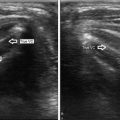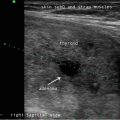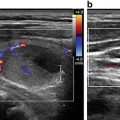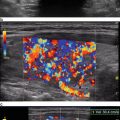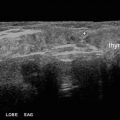Fig. 43.1
Early exposure to ultrasound techniques improves understanding of both anatomy and pathophysiology. These ultrasound skills can also be readily transferred to clinical practice during the latter part of medical training and throughout a medical career
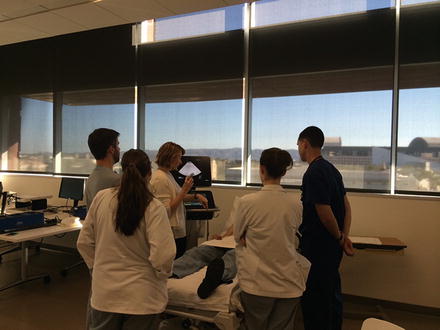
Fig. 43.2
Faculty member practicing ultrasound with third year medical students at the University of Arizona College of Medicine, Phoenix. These students are about to begin their clinical rotations
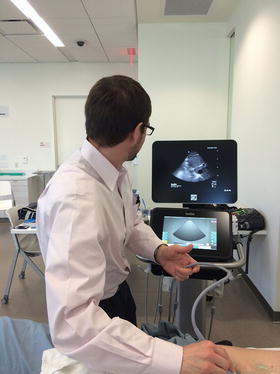
Fig. 43.3
Medical students practicing the Focused Assessment with Sonography in Trauma (FAST) examination on each other prior to their trauma surgery rotation at the University of Arizona College of Medicine, Phoenix
In the national survey of curriculum administrators, the most common reasons for not implementing US were time in the curriculum and money. US machines are not inexpensive, with even the smaller, basic machines costing 20,000–55,000. Also as medical schools pressured pressure are pressured to cut down the amount of hours spent in the classroom, it seems a daunting task to add more material to an already overloaded curriculum. Just as curriculum administrators are having a hard time finding time in the curriculum to teach US, students also report that time is a barrier in learning US [8].
A well-run US program requires faculty fully committed to US and teaching. It also requires a significant commitment on the part of the administration as the US machines and servers for image archives are costly to purchase and maintain [8].
However, it is necessary for students to be exposed to US early since the abilities of the US user correlates positively with the number of scans performed [14]. US skills must also be frequently practiced and reinforced, or they diminish significantly [18].
43.8 Conclusion
Ultrasound is an increasingly important imaging modality which has become an integral part of many clinical specialties. It functions as a screening, diagnostic, and procedural tool. As the technology continues to advance and US becomes ever more accessible, the demand for US proficiency will continue to increase. US training should begin in medical school so that students can better understand and learn anatomy, can have supervised practice of US use, increase student satisfaction in learning anatomy, and improve physical exam skills. Significantly, early exposure and development of US skills ensures that students are familiar with the basic components of US by the time they reach residency and, during residency, this enhances the potential to incorporate US in subsequent professional careers.
References
1.
2.
3.
Teichgräber UK, Meyer JM, Poulsen Nautrup C, von Rautenfeld DB. Ultrasound anatomy: a practical teaching system in human gross anatomy. Med Educ. 1996;30(4):296–8.CrossRefPubMed
Stay updated, free articles. Join our Telegram channel

Full access? Get Clinical Tree



